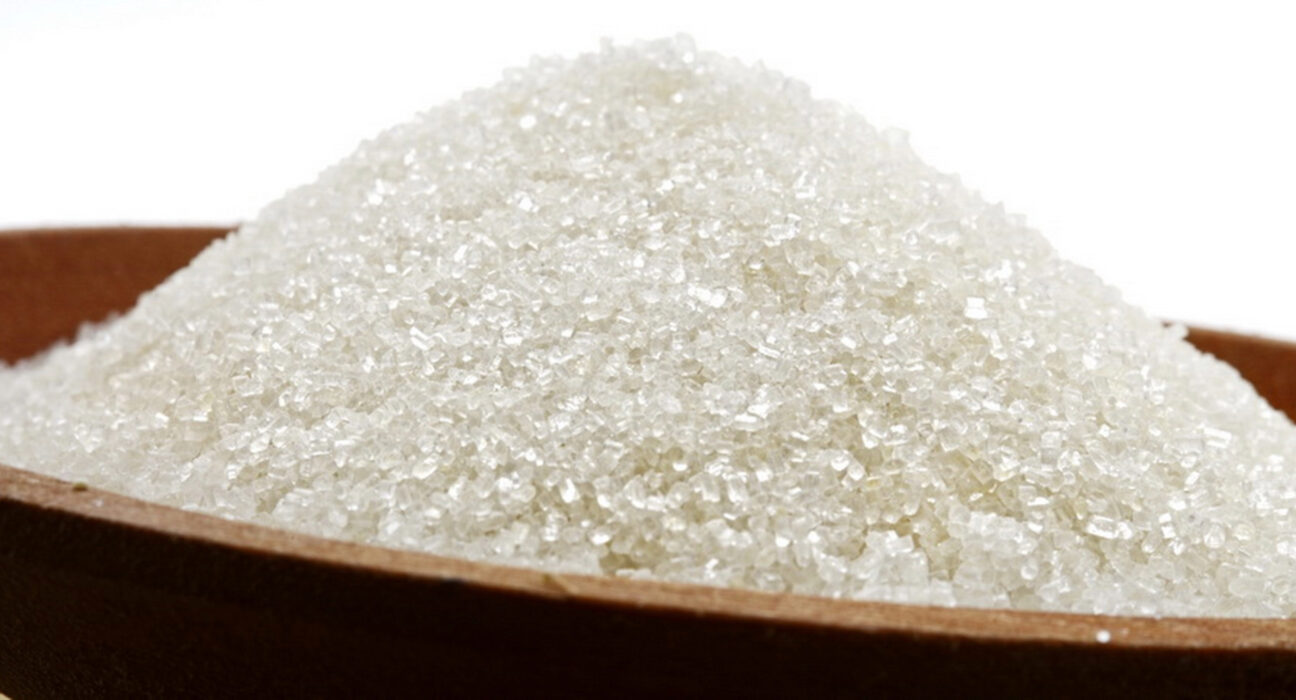Introduction:
Consuming too much sugar has been connected to a number of health problems, such as heart disease, type 2 diabetes, and obesity. Reducing your sugar intake can seem difficult, but even little adjustments to your everyday routine can have a big impact on your general health and wellbeing. We’ll provide helpful advice in this blog to help you cut back on sugar consumption and develop a better connection with food.
1. Read Food Labels
Reading food labels is crucial for making informed decisions about our dietary choices and ensuring that we’re not unknowingly consuming excessive amounts of sugar. By familiarizing ourselves with food labels and ingredients lists, we can identify hidden sources of sugar in packaged foods and make healthier choices to support our overall well-being.
One of the first steps in deciphering food labels is understanding the various names used to indicate sugar in its many forms. While “sugar” is a common term, manufacturers often use alternative names to disguise the presence of added sugars. These may include high-fructose corn syrup, cane juice, dextrose, fructose, glucose, sucrose, maltose, and syrup. By recognizing these alternative names, we can more effectively identify hidden sugars in processed foods and beverages.
When examining food labels, it’s important to pay attention to the total sugar content listed in grams per serving. This figure includes both naturally occurring sugars, such as those found in fruits and dairy products, as well as added sugars, which are incorporated into foods during processing or preparation. While natural sugars are generally considered healthier options, added sugars contribute empty calories and can increase the risk of various health issues when consumed in excess.
To make healthier choices, prioritize products with lower sugar content or opt for unsweetened alternatives whenever possible. Choose whole foods and minimally processed options that are naturally low in sugar, such as fresh fruits, vegetables, whole grains, lean proteins, and unsweetened dairy products. When selecting packaged foods, compare different brands and varieties to find options with less added sugar or choose products labeled as “no added sugar” or “unsweetened.”
2. Limit Sugary Beverages
Limiting sugary beverages is a simple yet effective strategy for reducing sugar intake and promoting overall health. By making mindful choices and swapping out sugary drinks for healthier alternatives, such as water, herbal teas, or infused water flavored with fresh fruit or herbs, we can significantly reduce our consumption of added sugars and support our well-being.
Sugary beverages, including soda, fruit juice, and sweetened iced tea, are major sources of added sugars in the diet and can contribute to excess calorie consumption, weight gain, and increased risk of chronic diseases such as obesity, type 2 diabetes, and heart disease. These drinks often contain high levels of sugar and provide little to no nutritional value, making them an easy target for reducing sugar intake.
One way to cut back on sugary beverages is to swap them out for healthier alternatives that hydrate the body without adding excess sugar or calories. Water is the ultimate hydrating beverage and provides essential hydration without any added sugars or artificial ingredients. Herbal teas, such as chamomile, peppermint, or ginger tea, offer a flavorful and soothing alternative to sugary drinks and can be enjoyed hot or cold.
Infused water is another delicious option that allows you to customize your beverage with natural flavors from fresh fruit, herbs, or vegetables. Simply add sliced citrus fruits, berries, cucumber, mint, or basil to a pitcher of water and let it infuse for a refreshing and hydrating drink that’s naturally sweet and flavorful without any added sugars.
In addition to swapping out sugary beverages for healthier alternatives, gradually reducing the amount of sugar you add to your tea or coffee can help train your taste buds to appreciate less sweetness over time. Start by cutting back on the amount of sugar or sweetener you use and gradually decrease it until you can enjoy your beverage without any added sweeteners.
3.Choose Whole Foods
Choosing whole foods over processed options is a cornerstone of a healthy diet and can have numerous benefits for overall well-being. Whole foods, such as fruits, vegetables, whole grains, lean proteins, and healthy fats, are nutrient-dense and provide essential vitamins, minerals, antioxidants, and fiber that support optimal health and vitality. By prioritizing whole, minimally processed foods in your diet, you can fuel your body with the nutrients it needs to thrive while reducing your intake of added sugars, unhealthy fats, and empty calories commonly found in processed snacks and convenience foods.
Fruits and vegetables are rich sources of vitamins, minerals, and antioxidants that support immune function, heart health, and overall vitality. These nutrient-packed foods also provide dietary fiber, which promotes digestive health, helps regulate blood sugar levels, and supports feelings of satiety and fullness. Aim to incorporate a variety of colorful fruits and vegetables into your meals and snacks to maximize nutritional benefits and add flavor and variety to your diet.
Whole grains, such as brown rice, quinoa, oats, and whole wheat, are excellent sources of complex carbohydrates, fiber, and essential nutrients like B vitamins and iron. Unlike refined grains found in processed foods like white bread, white rice, and sugary cereals, whole grains are less processed and retain their natural fiber and nutrients. Including whole grains in your diet can help stabilize blood sugar levels, promote feelings of fullness, and support long-term health and well-being.
Lean proteins, such as poultry, fish, eggs, tofu, beans, and legumes, are essential for muscle repair, immune function, and overall growth and development. Choose lean protein sources that are low in saturated fat and free from added sugars and unhealthy additives. Healthy fats, such as those found in avocados, nuts, seeds, and olive oil, are important for brain health, hormone production, and heart health. Incorporating these nutrient-rich foods into your meals and snacks can help you feel satisfied and energized while supporting your overall health and well-being.
4. Opt for Natural Sweeteners
Opting for natural sweeteners like honey, maple syrup, and stevia can be a healthier choice compared to refined sugar, offering a more wholesome and less processed option for satisfying your sweet cravings. While it’s important to remember that these sweeteners still contain calories and should be used in moderation, incorporating them into your diet can provide a variety of flavors and benefits beyond simple sweetness.
Honey, one of the oldest sweeteners known to humanity, offers not only sweetness but also a plethora of health benefits. Rich in antioxidants, vitamins, and minerals, honey possesses antimicrobial properties and can help soothe sore throats and coughs. It contains enzymes that aid in digestion and promotes overall well-being. Opting for raw, unprocessed honey ensures you receive maximum nutritional benefits.
Maple syrup, derived from the sap of maple trees, is prized for its rich flavor and versatility. Unlike refined sugar, maple syrup retains its natural nutrients during processing, including antioxidants, vitamins, and minerals like manganese and zinc. With a lower glycemic index compared to refined sugar, maple syrup causes a slower and steadier rise in blood sugar levels, making it suitable for those managing their blood sugar levels.
Stevia, extracted from the leaves of the Stevia rebaudiana plant, is a plant-based sweetener known for its intense sweetness and zero-calorie content. Unlike artificial sweeteners, stevia is considered a natural and safe alternative to sugar. It can be used in moderation to sweeten beverages, baked goods, and desserts without contributing to excess calorie intake or blood sugar spikes.
5. Practice Mindful Eating
Practicing mindful eating is a powerful tool for cultivating a healthier relationship with food, promoting balanced eating habits, and reducing the tendency to overindulge in sugary treats and mindless snacking. By paying attention to hunger and fullness cues and eating mindfully, we can become more attuned to our body’s needs and better regulate our food intake.
Mindful eating involves being present and attentive during meals and snacks, rather than eating on autopilot or in response to external cues such as emotions, boredom, or social pressure. By tuning into our body’s signals of hunger and fullness, we can distinguish between physical hunger and other cues that may trigger eating, such as stress or boredom.
When it comes to enjoying sweet treats, practicing mindful eating can help us savor the experience and derive greater satisfaction from smaller portions. Instead of mindlessly consuming sugary snacks in large quantities, choose smaller portions and savor each bite slowly, paying attention to the taste, texture, and sensation they provide. By eating more slowly and mindfully, we can fully appreciate the flavors and enjoyment of sweet treats without overindulging or feeling guilty.
Additionally, incorporating mindfulness techniques such as deep breathing, conscious chewing, and focusing on the present moment can enhance the mindful eating experience and promote greater satisfaction and enjoyment from food. By taking the time to savor each bite and fully engage with the eating process, we can foster a deeper connection with our food and cultivate a greater sense of gratitude and appreciation for the nourishment it provides.
6. Plan Ahead
Planning ahead is a key strategy for maintaining a healthy diet and reducing the temptation to indulge in sugary snacks or rely on convenience foods. By taking the time to plan and prepare meals and snacks in advance, you can make healthier choices and ensure that nutritious options are readily available when hunger strikes.
One of the main advantages of planning ahead is that it helps you avoid impulsive decisions and mindless eating. When meals and snacks are already prepared or readily available, you’re less likely to reach for unhealthy options out of convenience or hunger. Instead, you can make intentional choices that align with your health and wellness goals.
To plan ahead effectively, set aside time each week to plan your meals and snacks for the upcoming days. Consider your schedule, dietary preferences, and nutritional needs when selecting recipes and ingredients. By having a clear plan in place, you can streamline grocery shopping and meal preparation, saving time and reducing stress during busy weekdays.
When stocking your kitchen, prioritize healthy snack options that are satisfying and nutritious. Nuts, seeds, Greek yogurt, and cut-up fruits and vegetables are excellent choices that provide a combination of protein, fiber, and essential nutrients. These snacks can help curb cravings, keep hunger at bay between meals, and provide a source of sustained energy throughout the day.
In addition to healthy snacks, make sure your kitchen is stocked with staple ingredients for preparing balanced meals. Whole grains, lean proteins, healthy fats, and a variety of fruits and vegetables can serve as the foundation for nutritious meals that support your health and well-being. Having these ingredients on hand makes it easier to whip up homemade meals that are both delicious and nutritious.
7. Be Creative in the Kitchen
Being creative in the kitchen is a fantastic way to explore new flavors, improve cooking skills, and make healthier choices when it comes to indulging in sweet treats. By experimenting with sugar-free or reduced-sugar recipes, you can satisfy your cravings for something sweet while still maintaining a balanced diet and reducing your intake of added sugars.
One approach to creating sugar-free or reduced-sugar recipes is to explore alternative ingredients that naturally add sweetness and moisture to baked goods and desserts. Ingredients like mashed bananas, applesauce, and unsweetened yogurt can serve as healthy substitutes for sugar, helping to enhance the flavor and texture of your creations without relying on refined sugars.
Mashed bananas are a versatile ingredient that can be used to sweeten a variety of baked goods, including muffins, pancakes, and cookies. Bananas not only provide natural sweetness but also add moisture and a hint of flavor that complements a wide range of recipes. Additionally, bananas are rich in potassium, vitamins, and dietary fiber, making them a nutritious choice for adding sweetness to your favorite treats.
Applesauce is another excellent alternative to sugar in baking recipes, offering natural sweetness and moisture without the need for added sugars. Like mashed bananas, applesauce can be used in a variety of baked goods, including cakes, breads, and brownies. Opt for unsweetened applesauce to avoid unnecessary added sugars and enjoy the natural sweetness and flavor of fresh apples.
Unsweetened yogurt is yet another ingredient that can add richness and moisture to baked goods while reducing the need for added sugars. Greek yogurt, in particular, is thick and creamy, making it an ideal substitute for butter, oil, or sour cream in many recipes. Not only does yogurt add natural sweetness and moisture to baked goods, but it also provides protein, calcium, and probiotics for added nutritional benefits.
8. Practice Moderation
Practicing moderation when it comes to consuming sweet treats and desserts is a key aspect of maintaining a balanced and sustainable approach to healthy eating. While it’s important to be mindful of our sugar intake and prioritize nutritious foods, allowing ourselves occasional indulgences can enhance our overall enjoyment of food and support a positive relationship with eating.
Moderation involves enjoying sweet treats and desserts in small quantities and with awareness, rather than overindulging or consuming them mindlessly. By savoring each bite and paying attention to the taste, texture, and satisfaction they provide, we can derive greater enjoyment from our treats and prevent feelings of guilt or regret afterward.
It’s essential to remember that practicing moderation doesn’t mean depriving ourselves of sugar entirely or adopting a restrictive approach to eating. Instead, it’s about finding a balance that allows us to enjoy treats without compromising our health goals or overall well-being. By allowing ourselves occasional indulgences, we can satisfy our cravings for something sweet while still maintaining a nutritious diet and lifestyle.
When enjoying sweet treats and desserts, it’s helpful to be mindful of portion sizes and choose high-quality options that truly satisfy our cravings. Opting for smaller servings or sharing desserts with others can help prevent overeating and promote greater satisfaction with our treats. Additionally, selecting treats made with wholesome ingredients and minimal added sugars can support our health goals while still allowing us to enjoy the flavors and pleasures of dessert.


Conclusion:
Reducing your intake of sugar is a journey that requires patience, mindfulness, and persistence. By implementing these practical tips into your daily life, you can gradually decrease your reliance on added sugars, improve your dietary habits, and cultivate a healthier lifestyle overall. Embrace the process, celebrate your progress, and enjoy the sweet taste of success as you prioritize your health and well-being.












